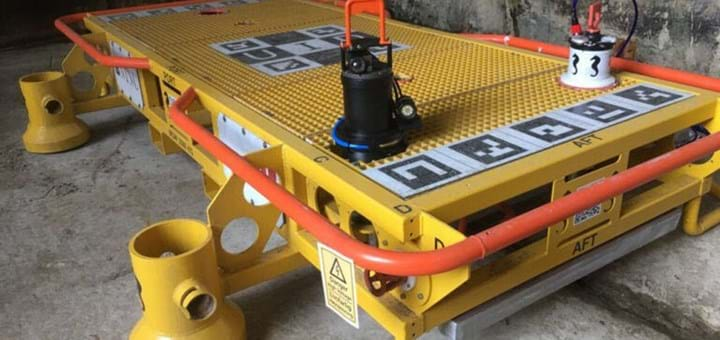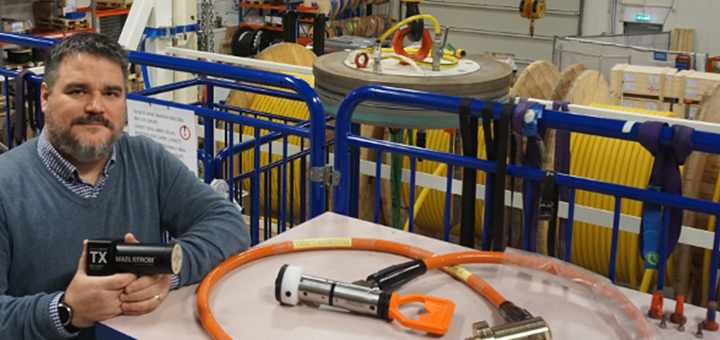Delivering to NTNU’s Test Site for Underwater Drones
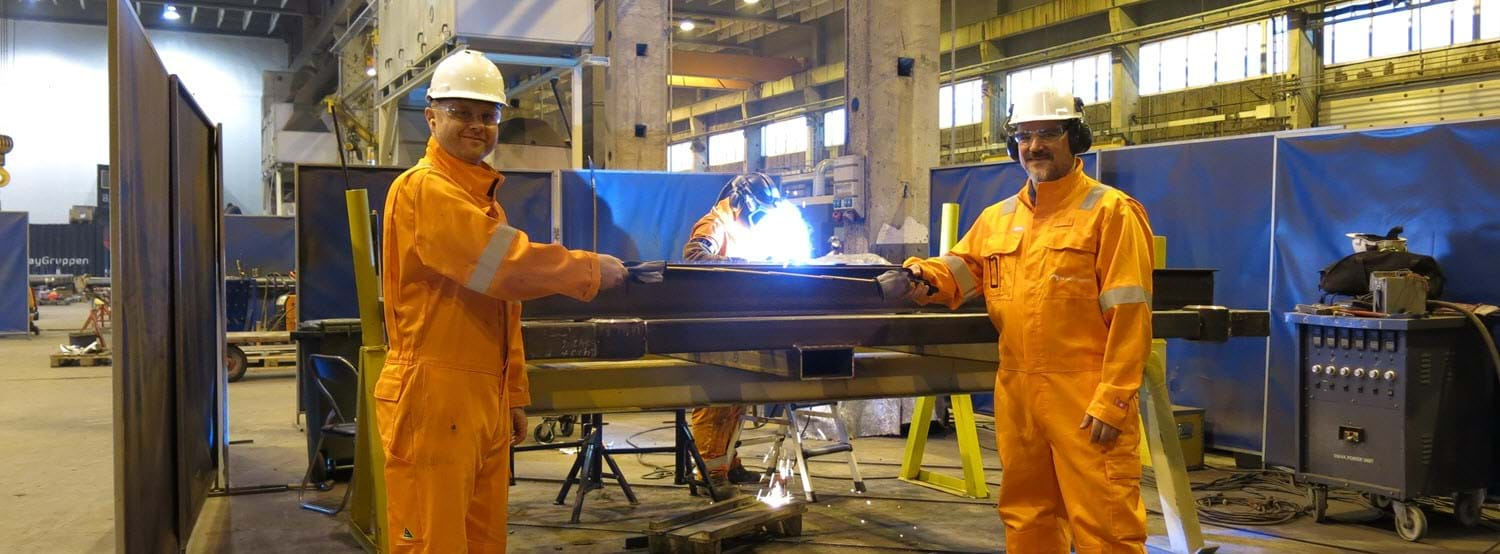
Bergen based companies Transmark Subsea and RadøyGruppen joined forces and won the contract for building the frame for a Seabed Ocean Laboratory for NTNU’s OceanLab in Trondheim.
SINTEF and NTNU in Trondheim are establishing the full scale OceanLab laboratories in Mid-Norway which will develop autonomous vessels above and below water.
Transmark Subsea and RadøyGruppen have designed and won the contract for building a frame for the Seabed Observatory Structure to OceanLab.
OceanLab Depends on Norwegian Equipment Developers
The purpose of the OceanLab is to accommodate the need from academia, research organisations and the industry for innovating, testing and developing autonomous ocean vehicles that are suitable for different missions below water and to monitor the marine environment.
Martin Ludvigsen is Professor and Manager of the Applied Underwater Laboratory (AUR-Lab) at the Department of Marine Technology NTNU where he teaches the course Underwater Engineering.
– The infrastructure in OceanLab depends on good collaboration and communication with Norwegian equipment developers and providers, says Ludvigsen.
– Together with the industry we want to develop an infrastructure that can contribute to technology sharpening our competitive edge. The infrastructure will be available to the industry for testing innovative solutions. It will also bring engineering science forward on both underwater operations and robotics, but also on marine autonomy in general. Providing qualified candidates to the operators and providers of marine technology is a central objective to the project, he says.
– Work inside OceanLab can vary from collaborative research projects, innovation projects to verification and validation of existing technology or improvements of proven solutions. The infrastructure includes subsea connection points at 365 meter and 85 meters depth including power and communication. Operations can be remotely controlled and supported by pre-installed instruments or vehicles operated by NTNU. OceanLab is operated in collaboration with NTNU and SINTEF Ocean, Ludvigsen concludes.
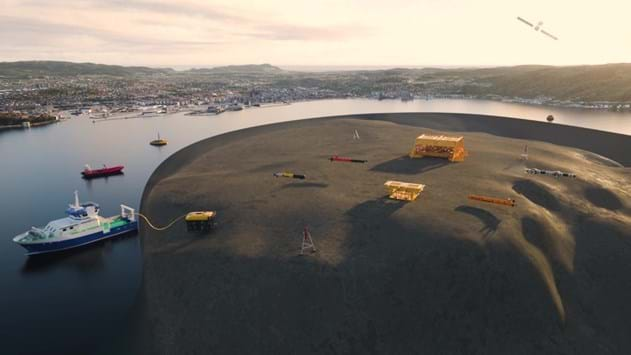
Photo ©NTNU OceanLab
Ocean Lab Nodes
The first nodes in this infrastructure represents a system of subsea infrastructure to facilitate research projects to address knowledge based and sustainable development of the blue economy by providing facilities for integrated full-scale research, education and development.
The infrastructure will be particularly important for research in digitisation and automation, and for making marine and maritime operations completely autonomous.
The laboratory will therefore play a key role in the future sustainable and efficient utilization of marine resources.
The OceanLab infrastructure will be an integrated part of the future Ocean Space Centre when the centre is finished and the first node in this infrastructure will be available for collaborating partners in 2023.
Bidding for Frame for the Seabed Ocean Observatory
NTNU have ordered an observation system with the intent to observe docking operations on their UID docking station as well as monitor the subsea environment in that area.
Through their spin-off company Blue Eye Robotics, NTNU have developed a small drone which they also want to operate from this subsea station.
During spring 2020; Transmark Subsea and RadøyGruppen performed a study for NTNU which involved designing the observation system frame which houses various underwater sensors and instrumentation, including a WiSub connector to charge the drone on the seabed.
– Our experience with subsea interconnection and intervention combined with Radøygruppen’s very mature experience in building these structures, made us very compatible and a good match for this assignment, says Mark Bokenfohr, Business Development Manager in Transmark Subsea.
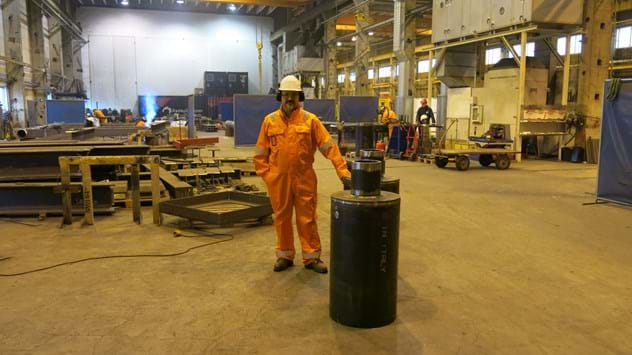
Mark Bokenfohr on site at RadøyGruppen’s facilites at Radøy on the West Coast of Norway.
The two Bergen based companies and members of GCE Ocean Technology went on to bid on the tender for the frame they had designed and ended up winning the contract for building the frame for the Seabed Observatory Structure to OceanLab in Trondheim.
– It’s great to have landed this contract together, says Rune Skarpenes, Sales Manager at RadøyGruppen.
– Our relations with Transmark Subsea and Mark has up until now been on a nod and handshake level. We have met and discussed at GCE Ocean Technology’s events. We have been looking for a common platform to work from. With this project, our companies can learn to know each other better. It’s great to be able to draw from our experience and provide design and engineering as well as fabrication and delivery, and we at RadøyGruppen are looking forward to delivering this equipment to NTNU. It shows the strength of our region. Hopefully we can attract more stakeholders in this project to supply a complete product to NTNU from Vestland, Skarpenes ends.
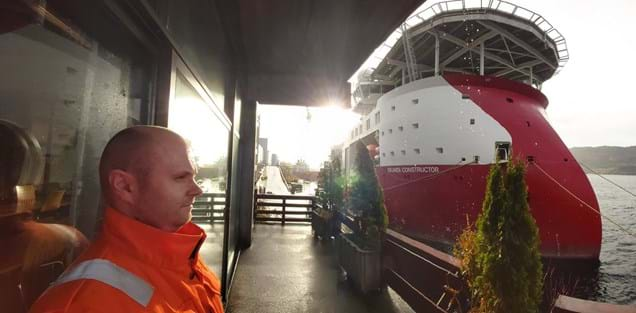
Rune Skarpenes, Sales Manager at RadøyGruppen.
Unique Test Site in Trondheimsfjorden
The frame for the Seabed Observatory Structure will contain a small-vehicle docking interface and will also be able to carry instrumentation e.g. to measure ocean currents.
A sonar system, cameras and lights will also be attached to the frame to observe not only the vehicle and the surroundings, but moreover to observe NTNU and Equinor’s existing docking station, underwater robots and surroundings of the Trondheim fjord.
One of these robots is Eelume that was tested in Trondheimsfjorden by NTNU in October this year.
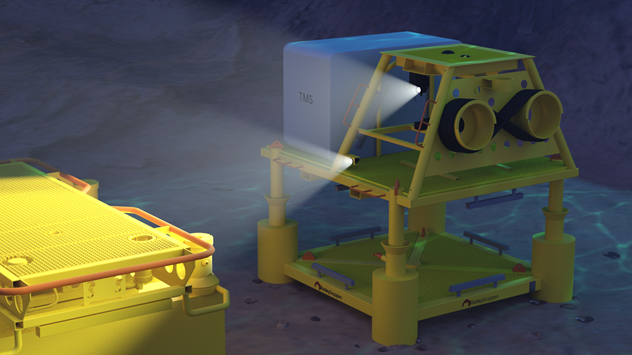
Illustration of the frame for the Seabed Observatory Structure designed by Transmark Subsea and RadøyGruppen. Illustration©Radøygruppen.
The frame will be positioned next to this test site for underwater drones at 365 meters water depths and is the first test-site where docking and charging is done on an industrial scale.
This system has an inductive power and communication system from Blue Logic and WiSub.
The additional frame for the new Seabed Observatory Structure delivered by Transmark Subsea and RadøyGruppen is scheduled to be delivered in January 2021.
Contact Information


RadøyGruppen is a complete fabrication, construction and integration service supplier.
At their base location they fabricate and construct all types of modules and equipment for the energy industry.

Transmark Subsea was established in 2009 as part of Transmark Holdings.
Over the years they have jointly developed subsea solutions in close cooperation with their customers, delivering equipment that has been installed at subsea sites of many major end users.

With support from the Research Council of Norway, SINTEF and NTNU are establishing the full scale OceanLab laboratories in Mid-Norway to meet requirements for education, research and innovation in the marine and maritime sectors.
The first Nodes in this infrastructure will be available for collaborating partners from academia, research organisations and/or industry in 2023.
The OceanLab infrastructure will be an integrated part of the future Ocean Space Centre when the centre is finished.
NTNU is a partner of GCE Ocean Technology

